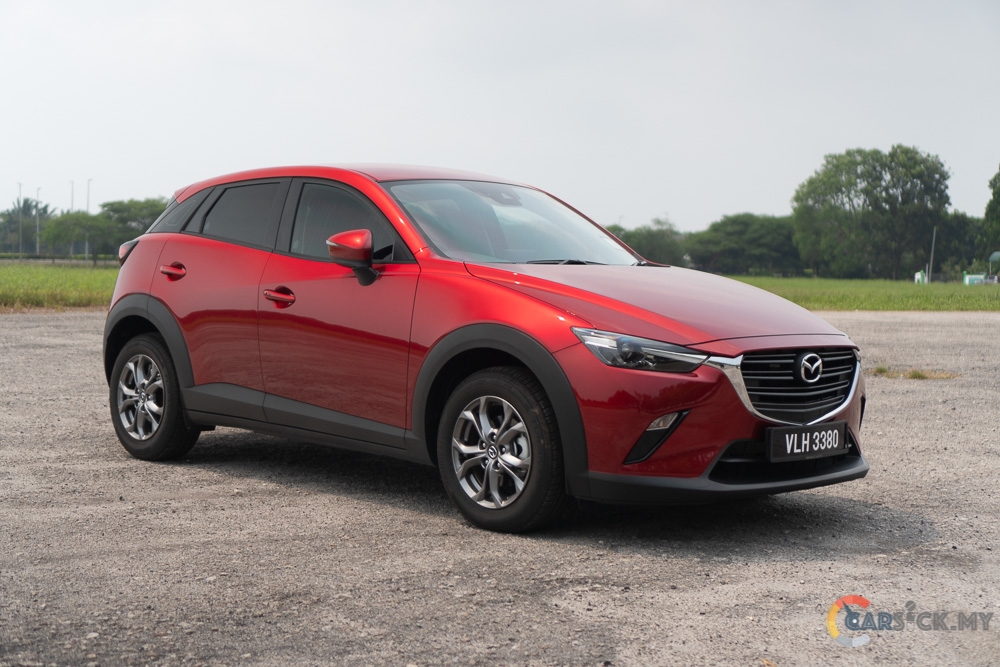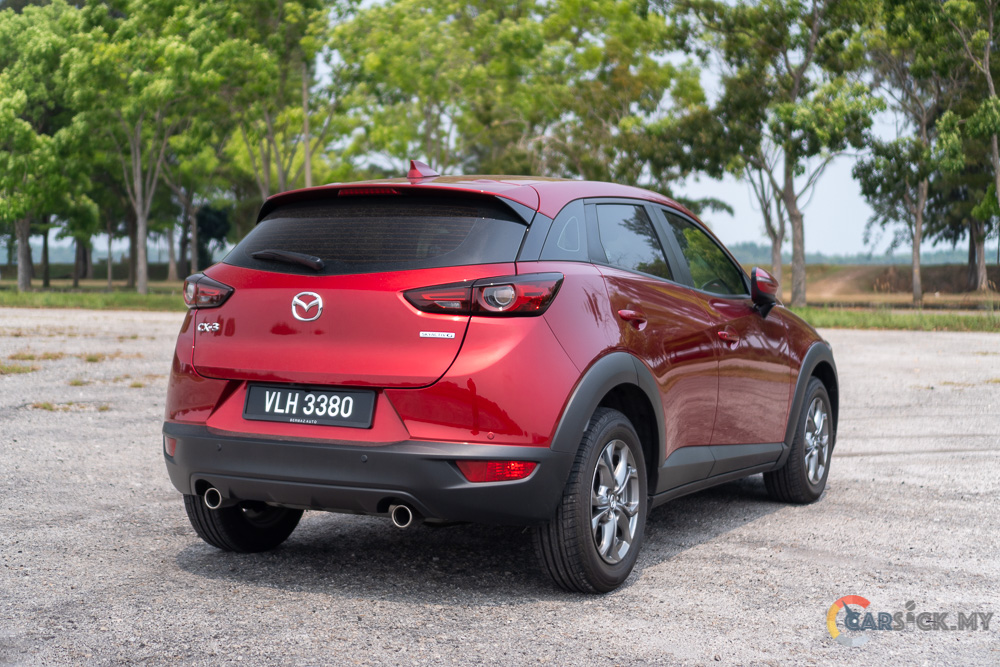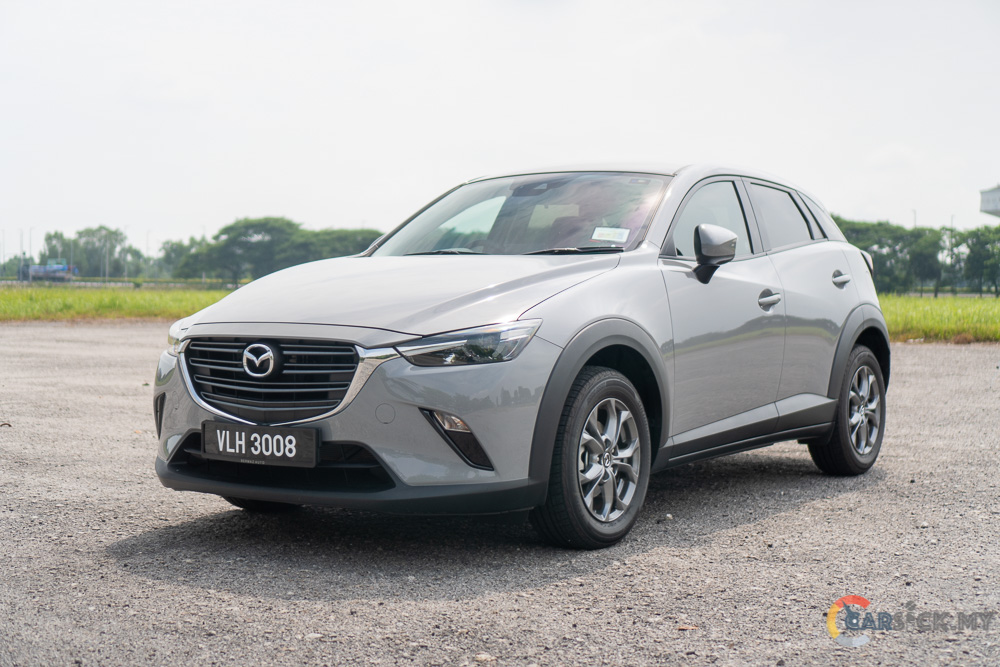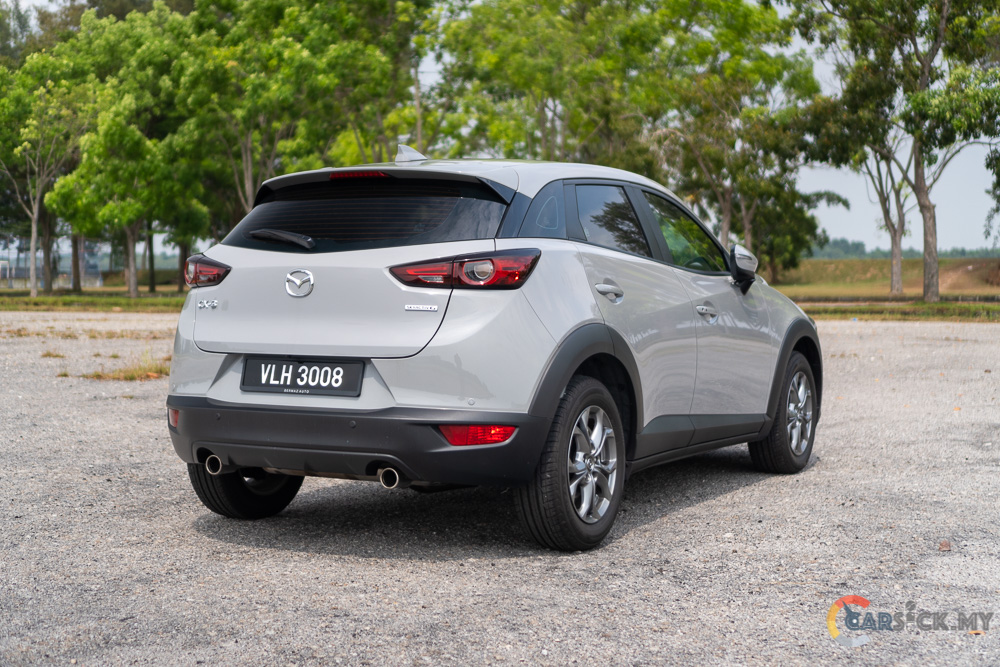Back when Mazda launched the Mazda CX-3, it was designed to go head-to-head against the Toyota CH-R and the Honda HR-V. As time passed, the HR-V has gotten bigger, and Toyota Malaysia has stopped importing the CH-R for the Malaysian market. This put the Mazda CX-3 in a weird position, and it has gone a little quiet for quite a while. Coming to 2024, Honda has introduced the WR-V, and many have speculated that Toyota might be launching the Yaris Cross, which directly competes with the CX-3 in terms of its size. Even though the CX-3 is the oldest model here, it received some updates at the end of 2023 to bring the fight to its newer competitors.

 For the Malaysian market, the CX-3 has been streamlined to three different variants. Among these variants, there are two engine options available for Mazda customers to choose from. Not too long ago, I had the opportunity to review the 1.5L Plus and 2.0L Plus variants. I will leave out the top-of-the-line 2.0L High for now. The 1.5L and 2.0L Plus variants practically share an identical equipment list, and the only difference is the powertrain. So this time around, I will review these two models together and share my thoughts on whether the CX-3 still has the ability to bring the fight to its newer competitors.
For the Malaysian market, the CX-3 has been streamlined to three different variants. Among these variants, there are two engine options available for Mazda customers to choose from. Not too long ago, I had the opportunity to review the 1.5L Plus and 2.0L Plus variants. I will leave out the top-of-the-line 2.0L High for now. The 1.5L and 2.0L Plus variants practically share an identical equipment list, and the only difference is the powertrain. So this time around, I will review these two models together and share my thoughts on whether the CX-3 still has the ability to bring the fight to its newer competitors. 
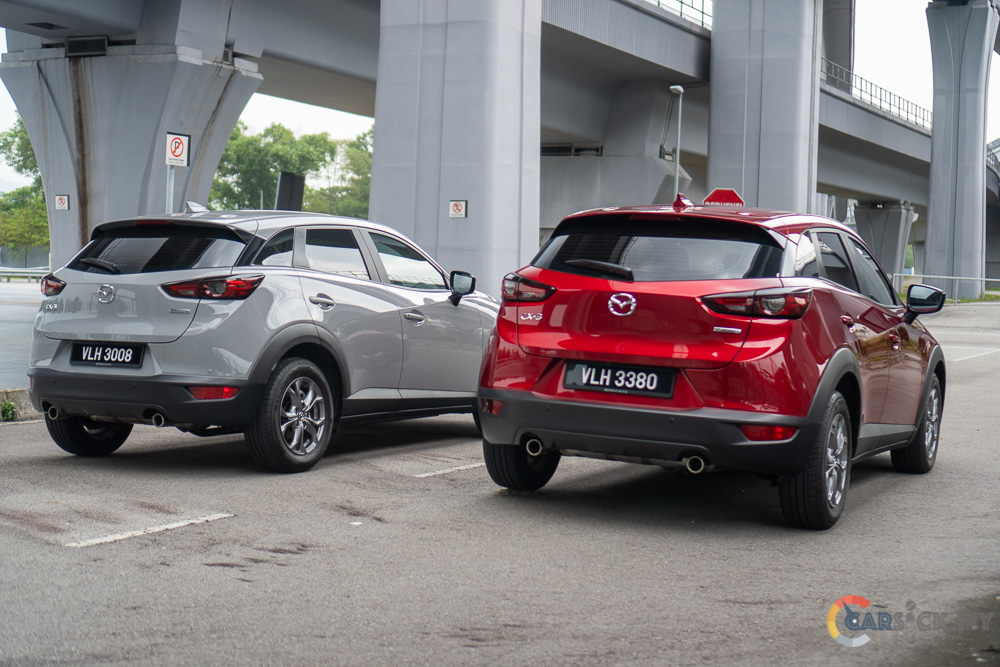
By now, the Mazda CX-3 is quite familiar to most Malaysians. But for this latest update, some slight changes have been added to enhance its aesthetic appeal. Starting with the headlights, it comes with full LED headlights and is now fitted with its signature daytime running lights. As a Plus variant, it gets an automatic high beam to assist the driver in dark areas. Apart from that, the front grille also gets some updates and is painted in a dark gray color. While it’s not really that obvious, I did notice it after spending quite some time with the CX-3. 
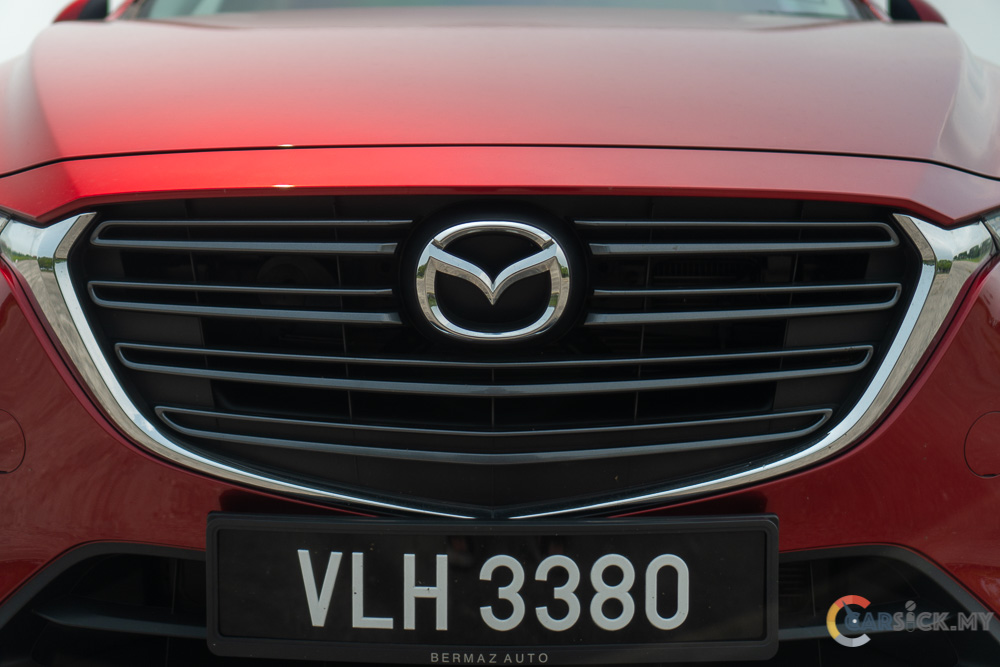
The changes at the back are also quite small. The only difference is the full LED tail lights. This gives the CX-3 a distinctive look, especially when the lights are turned on. As part of the Plus variant, it now comes with a fully motorized wing mirror, which was absent on the core variant previously. Lastly, both 1.5L and 2.0L variants come with the same 16-inch rims that look good. While the 215/60 R16 tires are on the thicker side, I think this enhances the comfort levels of both vehicles. 
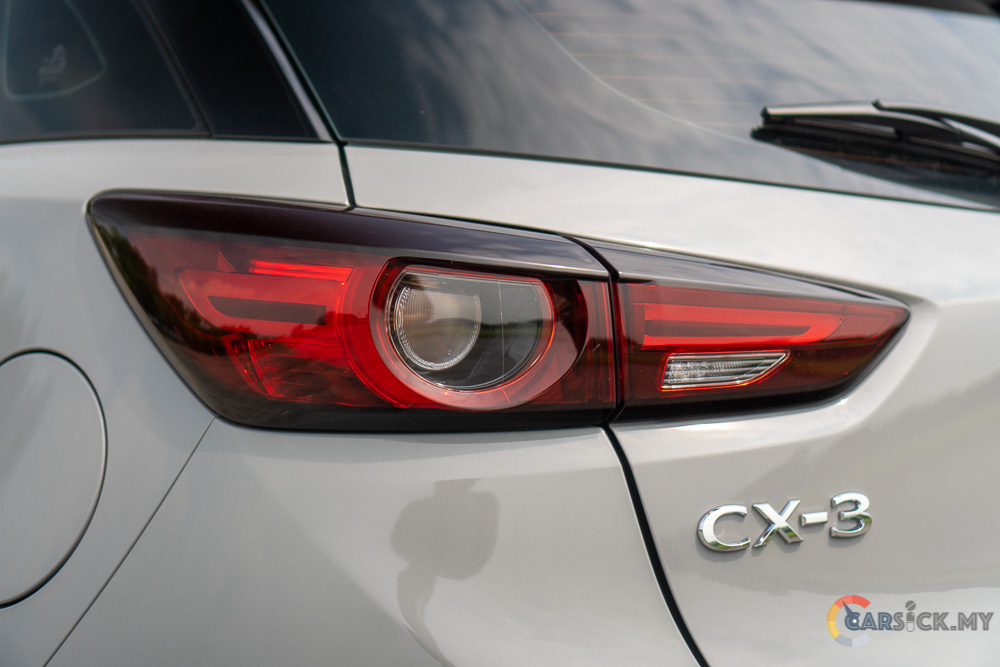
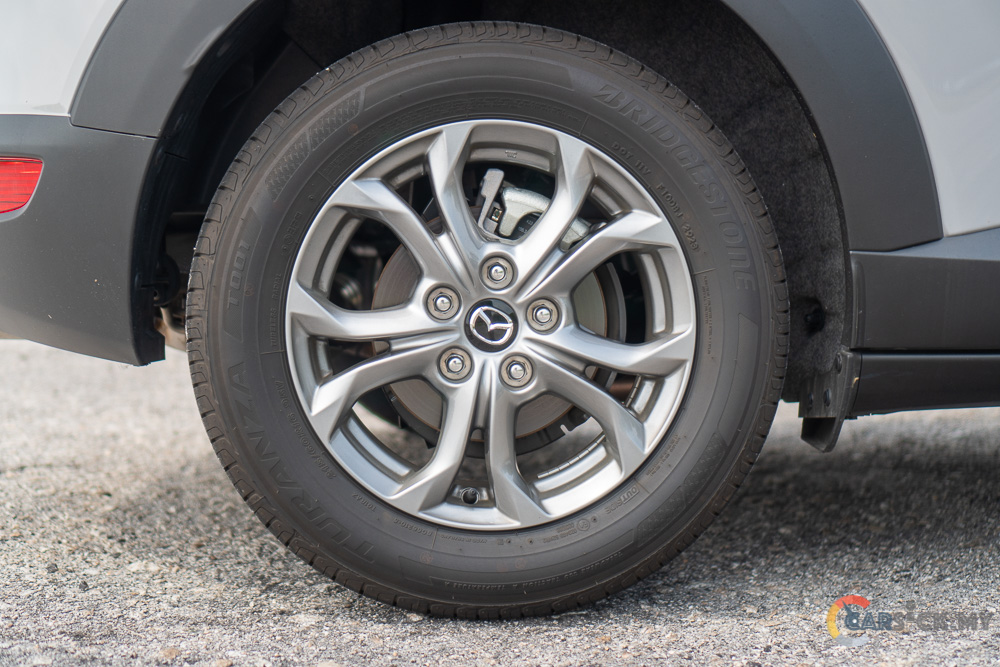
Inside the CX-3, you’ll find an interior that’s quite down to earth. The dashboard is literally carried over from the Mazda 2, and it is very well put together. The instrument cluster is carried over as well, featuring an analogue speedometer and a digital tachometer. While the instrument cluster looks compact, it’s definitely easy to read, and I think it fits the SUV’s vibe. 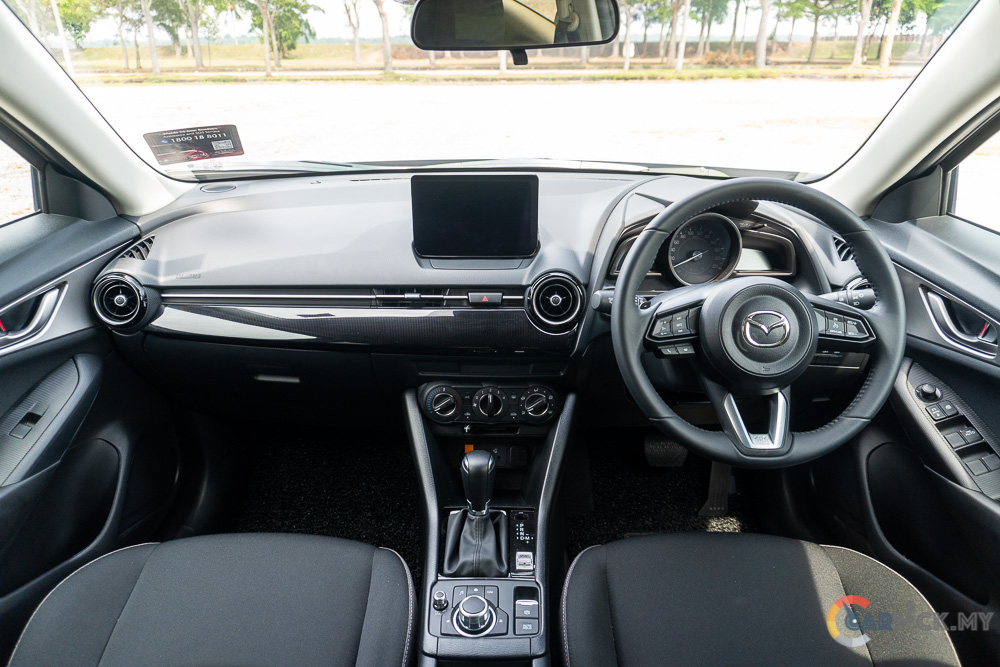

Just like the latest Mazda updates, the infotainment system also receives its own little upgrade. It now measures 8 inches, the same system as the CX-5. For 2024, the infotainment screen is not really high definition. But because the CX-3 cabin is quite small, it suits this screen better than the bigger vehicles. The same goes for the reverse camera, which could benefit from better sharpness to allow the driver to see the rear more clearly. Also similar to the CX-5, the CX-3 infotainment system comes with wireless Apple CarPlay. However, I wasn’t able to test it out. 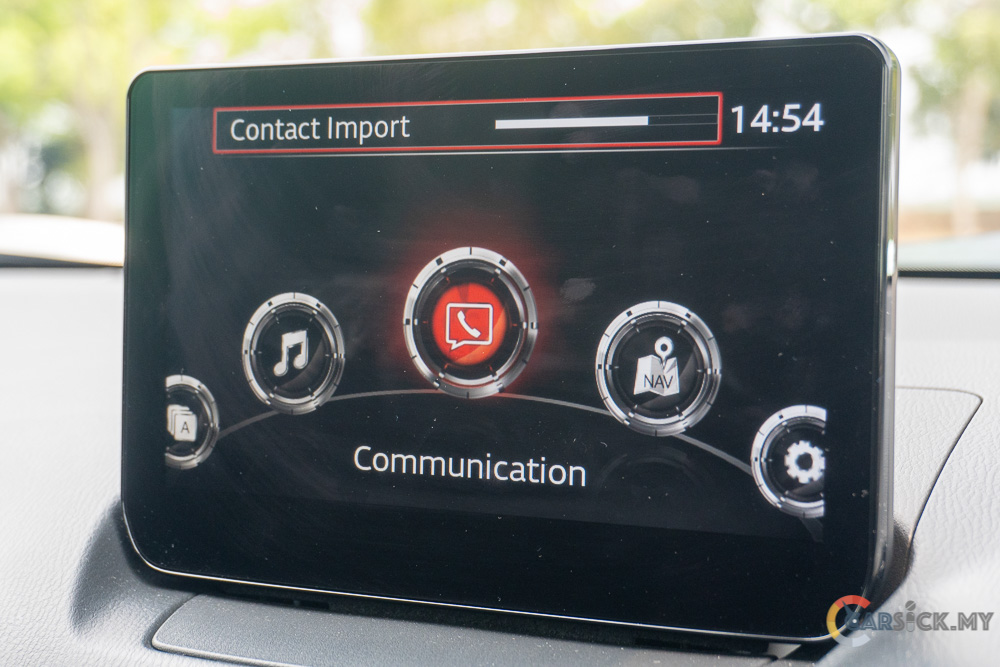

Below the infotainment screen, the Plus variant of the CX-3 comes with manual climate controls. While it does take away some premium feel from the cabin, I think this climate control is simple to use, and the most important thing is that you don’t have to go into the infotainment screen to change any AC settings. Other than that, the whole interior feels very well put together and still feels better than interiors with fancy curves and angles, even though the CX-3 interior is older. 
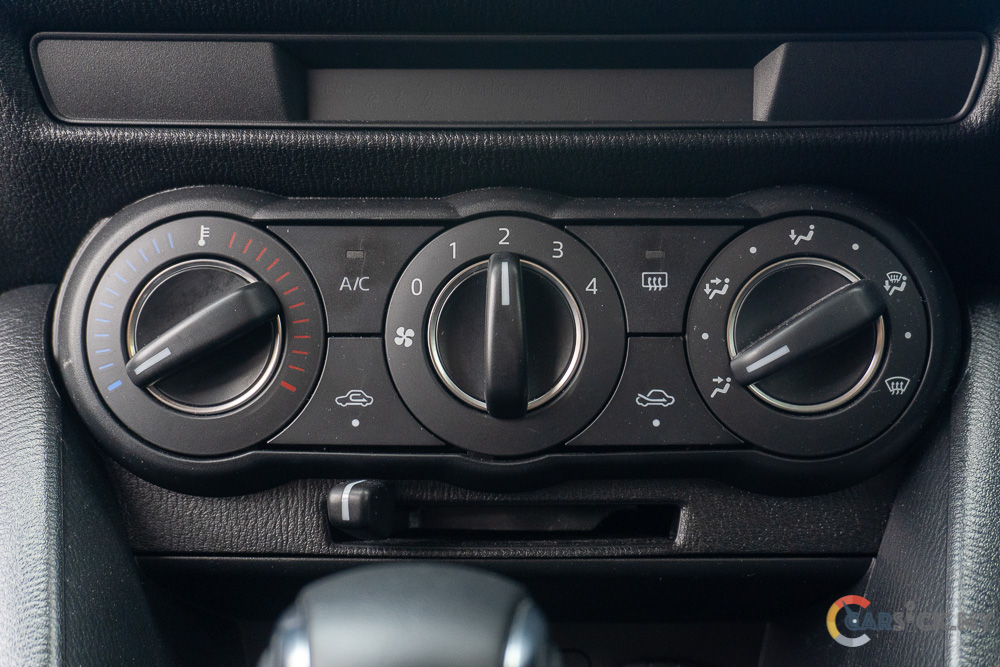
Moving to the seats, both Plus variants are wrapped in cloth. I really like the cloth that Mazda uses, as it feels smooth and soft, giving you a premium feel even with cloth seats. The seating position is spot on, giving the driver a cocoon feel when sitting in the driver’s seat. As for the rear seats, the space is on the smaller side, but I still find it decently comfortable back there. While you don’t get much legroom to sit like a boss, you can still move your legs a little when needed. Headroom is there, but if you want to fit three people in the back, the shoulder room will be really limited. Due to the small cabin, rear passengers don’t really need extra AC vents to cool themselves down; the front vents are sufficient. 

As for the boot, the CX-3 comes with a 350L boot to carry all your daily needs. While the size may not be big, I think it is sufficient for most people. Unless you need a lot more boot space to carry more items all the time, you’d be better off buying a larger vehicle. But from time to time, when you really need that extra loading capacity, the rear seats of the CX-3 can also be folded down to achieve that. 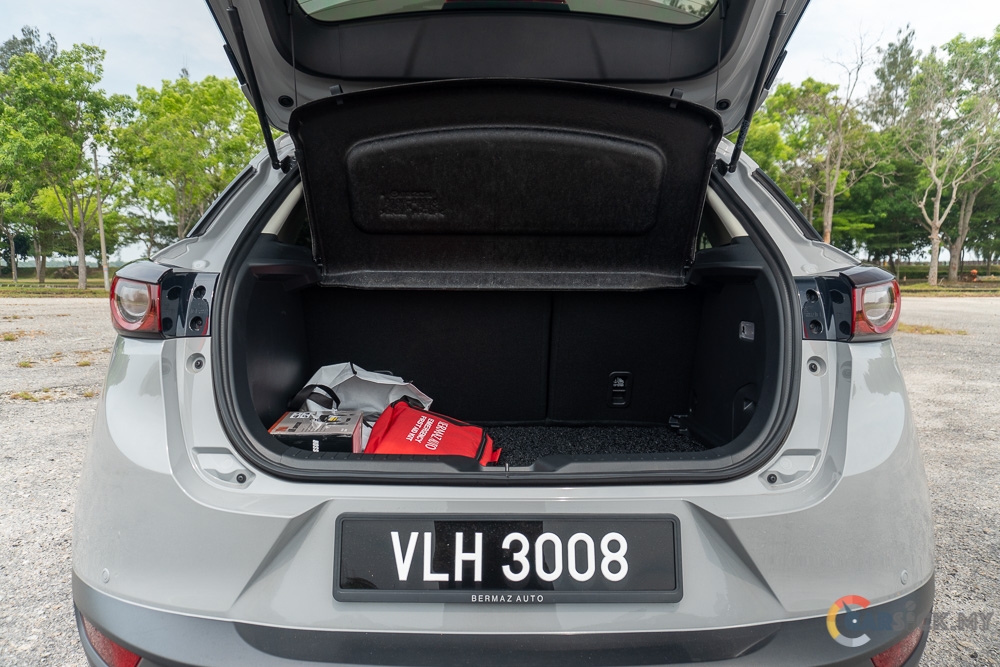


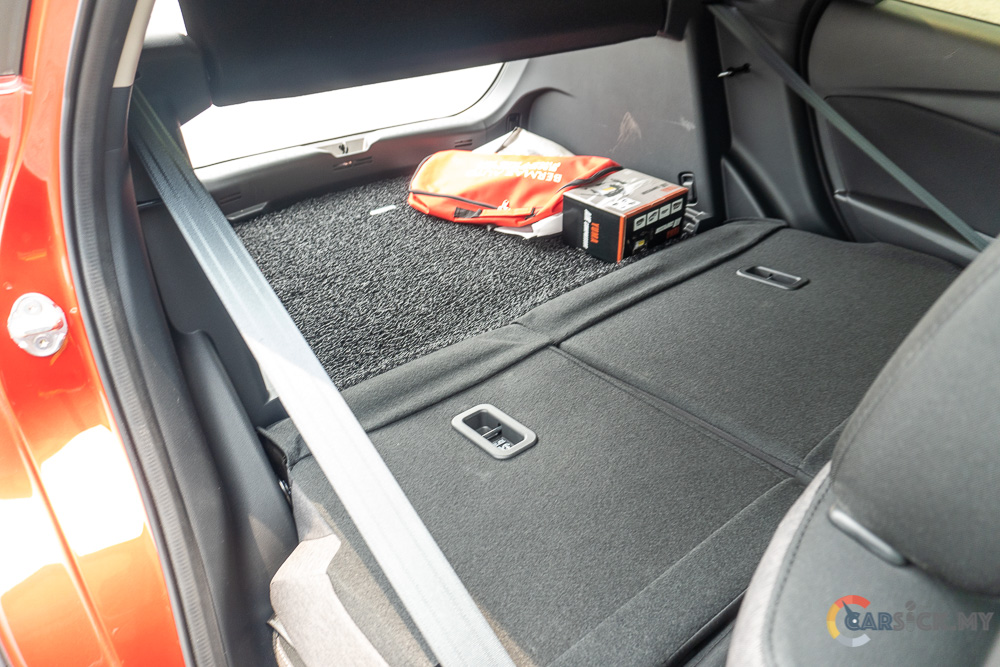
Moving on to the powertrain, the CX-3 is available with two different powertrains. Both powertrains are quite familiar to Mazda owners in Malaysia. These two powertrains include the 1.5L and 2.0L 4-cylinder Skyactiv engines. Both engines are mated to a 6-speed automatic transmission, and power is channeled to the front wheels. The 1.5L engine produces 114 hp and a peak torque of 149 Nm, while the 2.0L produces 154 hp and a peak torque of 206 Nm. 
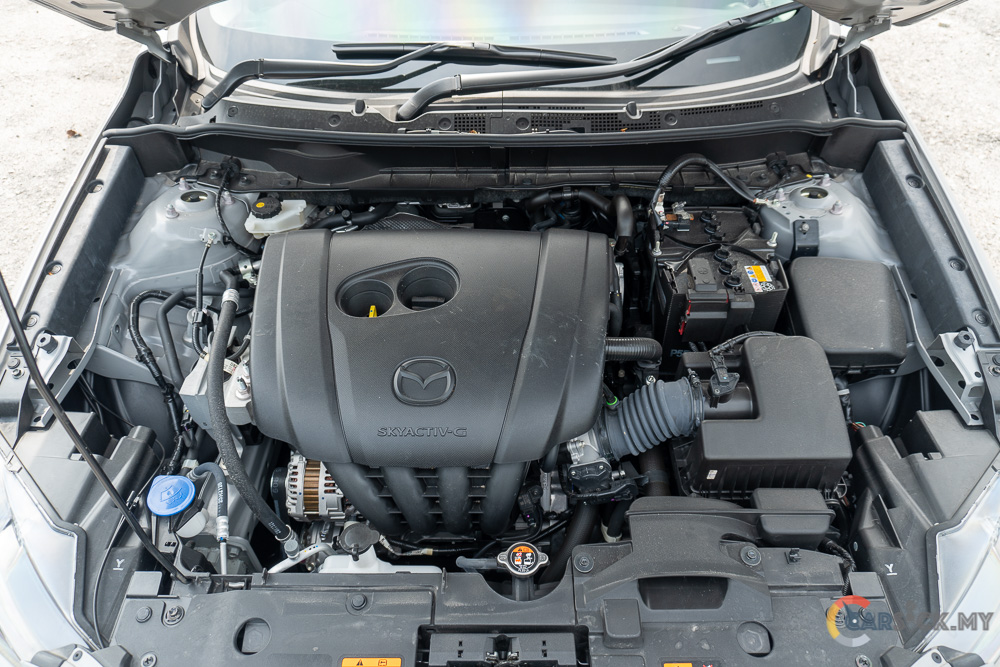
Let’s start with the 1.5L engine, which is a peppy little engine. It has no problem getting you up to speed, though it takes a bit more time to get there. At the end of the day, it’s still a 1.5L naturally aspirated engine. While on the move, this engine is quite willing to let you rev it hard, and it doesn’t really sound strained at all. It allows you to have a lot of fun before you start breaking the speed limit. The in-gear acceleration is good as well, as the good amount of torque helps propel the SUV forward. As long as you keep the engine speed high enough, overtaking can also be done decently. On top of being a peppy little engine, this 1.5L engine is also quite fuel-efficient. No matter how hard I drive, I still get an average of 13 km/L of fuel economy, which is impressive.
Moving on to the 2.0L variant, I instantly noticed how much more effortlessly this variant gets up to speed. This engine definitely pulls stronger, and you don’t really have to rev it hard to get the vehicle going. This also translates to a calmer interior compared to the 1.5L variant. On the flip side, the bigger engine capacity means higher road tax, but it’s quite negligible for most people. Even with a larger engine, the fuel efficiency is also decent. I get an average of 12 km/L of fuel economy with the 2.0L variant.
In terms of ride and handling, both variants have pretty much the same character. The CX-3 comes with superb handling, thanks to its low center of gravity. This makes the CX-3 very agile when tackling corners. However, you can feel that the vehicle tries to push wide quite early, because the front of the vehicle feels heavy. This gives the impression that the vehicle has a low cornering limit, but with some tuning in driving style, I’m pretty sure the CX-3 is easy to drive. As for the ride, the CX-3 rides over bumps and uneven roads with a sense of firmness to the suspension. But the firmness still does a good job of keeping most of the jolts from creeping into the cabin. This is further aided by the thicker tires that the Plus variants come with, which help keep the cabin as calm as possible.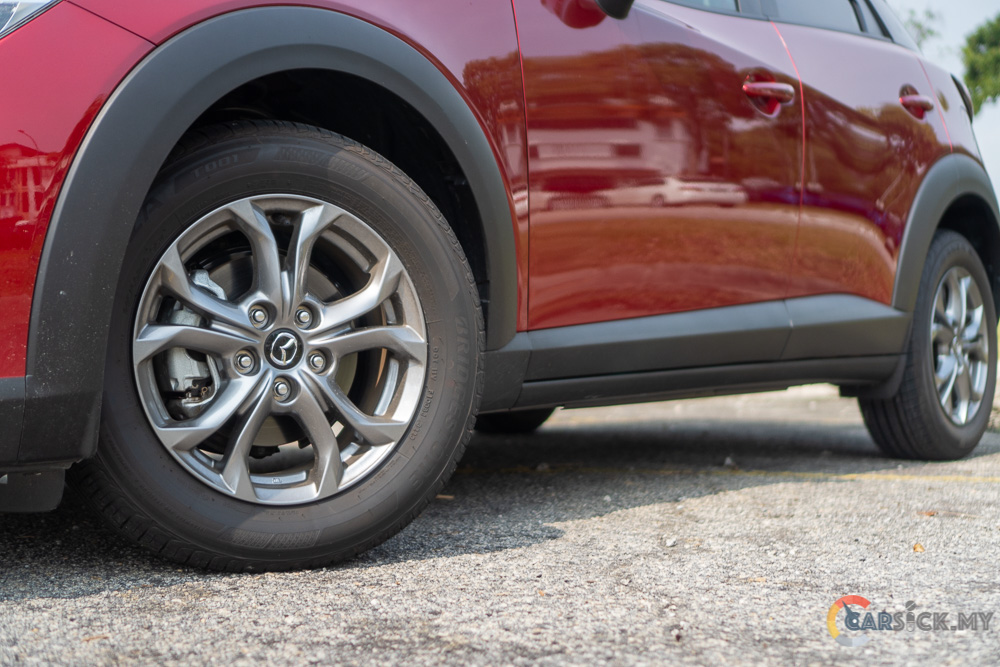
Apart from the capable suspension, the sharp steering system also provides good feedback to the driver. It gives the driver enough information to know where the front wheels are pointing. In my honest opinion, I think the CX-3 feels more nimble compared to the CX-30. This is because of the shorter wheelbase that the CX-3 has. These capabilities allow the CX-3 to change direction whenever the steering wheel is turned.
Regarding the brakes, the brakes on the CX-3 1.5L variant are decently tuned. The brake pedal gives the driver a solid feel, which translates to confident braking performance. The amount of braking force is easy to gauge, allowing the driver to break later if necessary. I do feel that the 2.0L variant might have a higher wear rate than the 1.5L variant because the 2.0L brakes need to handle the extra speed you can achieve with this variant.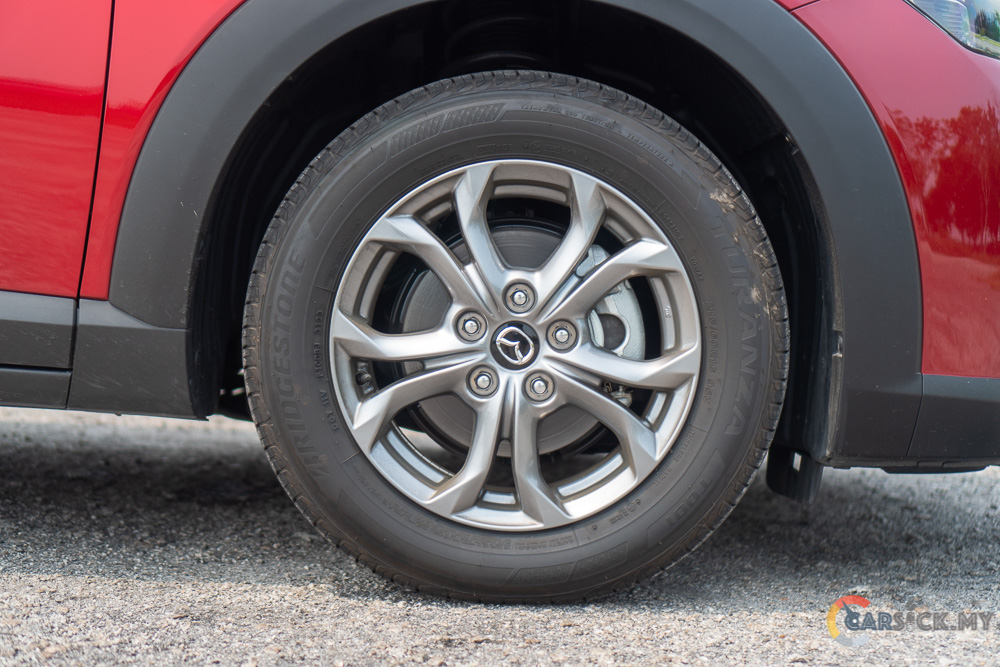
For these two Plus variants, they both share the same amount of safety and driver assistance systems. By modern standards, what you can find in the CX-3 is considered basic driver assistance systems. But personally, I think this is more than sufficient, as it saves you a lot of time fiddling with the driver assistance systems. The CX-3 Plus variant comes with six airbags, Emergency Stop Signal (ESS), Anti-Lock Braking System (ABS), Emergency Brake Assist (EBA), Dynamic Stability Control (DSC), Traction Control System (TCS), Electronic Brake-force Distribution (EBD), and Hill Launch Assist (HLA). For the driver assistance system, the Plus variant comes with High Beam Control (HBC), Blind Spot Monitoring (BSM), Rear Cross Traffic Alert (RCTA), Lane Departure Warning System (LDWS), and Smart City Brake Support (SCBS).
With a price tag of RM 115,720 for the 1.5L and RM 126,159 for the 2.0L CX-3, the extra RM 10k basically gets you a more powerful engine. As I stated in the introduction, both SUVs share the same specifications all around the vehicle. So you might ask, which variant suits you? After my time with both vehicles, I think both are equally great SUVs to own. If you do a lot of point A to point B driving and are more concerned with fuel efficiency than speed, the 1.5L variant is more than enough for you. But if you like a bit more power and your budget can stretch that extra RM 10k, why not go for the more powerful variant? With extra power, the engine doesn’t have to work as hard to get up to speed, and in turn, it will give you a more relaxed driving characteristic.
Check out the full photo album here. 